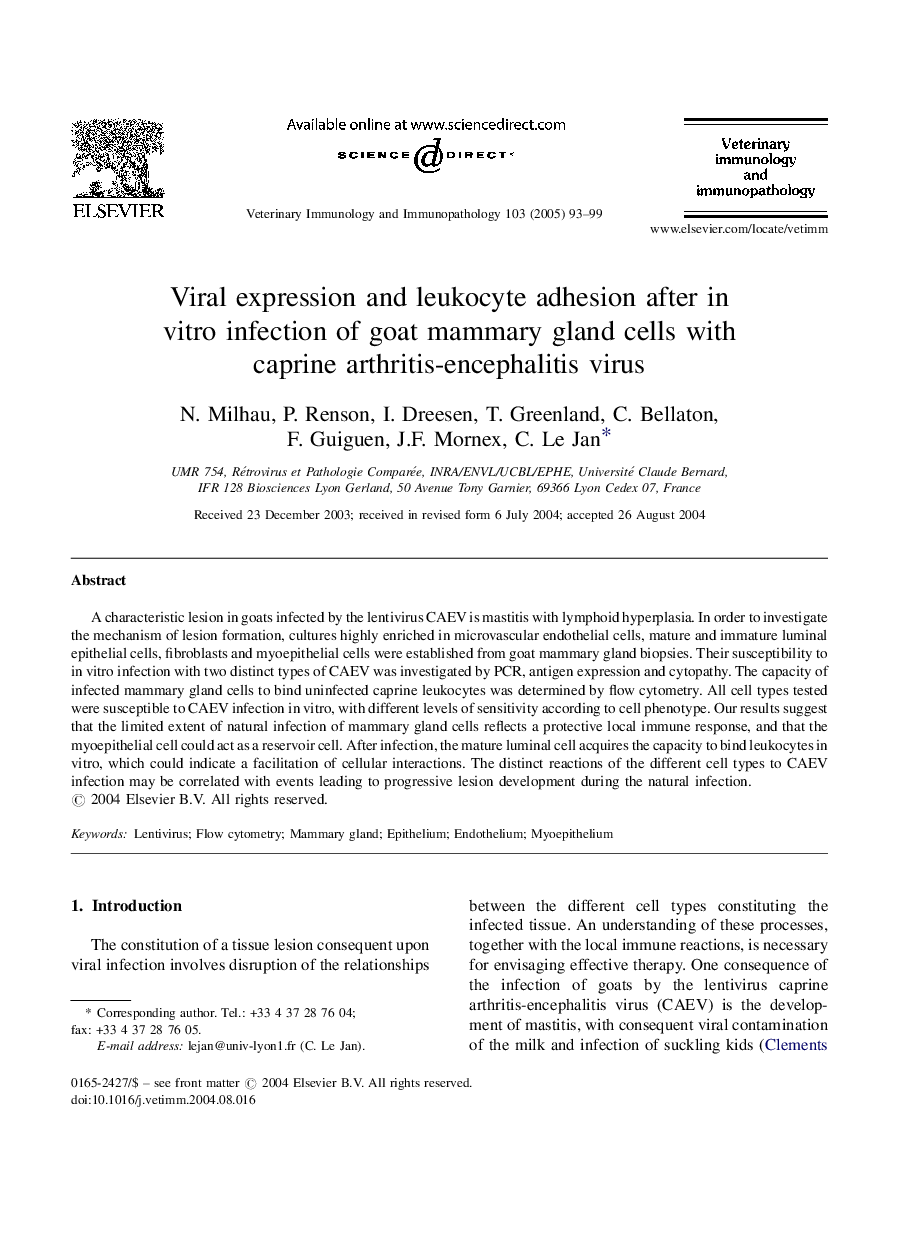| Article ID | Journal | Published Year | Pages | File Type |
|---|---|---|---|---|
| 8987871 | Veterinary Immunology and Immunopathology | 2005 | 7 Pages |
Abstract
A characteristic lesion in goats infected by the lentivirus CAEV is mastitis with lymphoid hyperplasia. In order to investigate the mechanism of lesion formation, cultures highly enriched in microvascular endothelial cells, mature and immature luminal epithelial cells, fibroblasts and myoepithelial cells were established from goat mammary gland biopsies. Their susceptibility to in vitro infection with two distinct types of CAEV was investigated by PCR, antigen expression and cytopathy. The capacity of infected mammary gland cells to bind uninfected caprine leukocytes was determined by flow cytometry. All cell types tested were susceptible to CAEV infection in vitro, with different levels of sensitivity according to cell phenotype. Our results suggest that the limited extent of natural infection of mammary gland cells reflects a protective local immune response, and that the myoepithelial cell could act as a reservoir cell. After infection, the mature luminal cell acquires the capacity to bind leukocytes in vitro, which could indicate a facilitation of cellular interactions. The distinct reactions of the different cell types to CAEV infection may be correlated with events leading to progressive lesion development during the natural infection.
Related Topics
Life Sciences
Agricultural and Biological Sciences
Animal Science and Zoology
Authors
N. Milhau, P. Renson, I. Dreesen, T. Greenland, C. Bellaton, F. Guiguen, J.F. Mornex, C. Le Jan,
